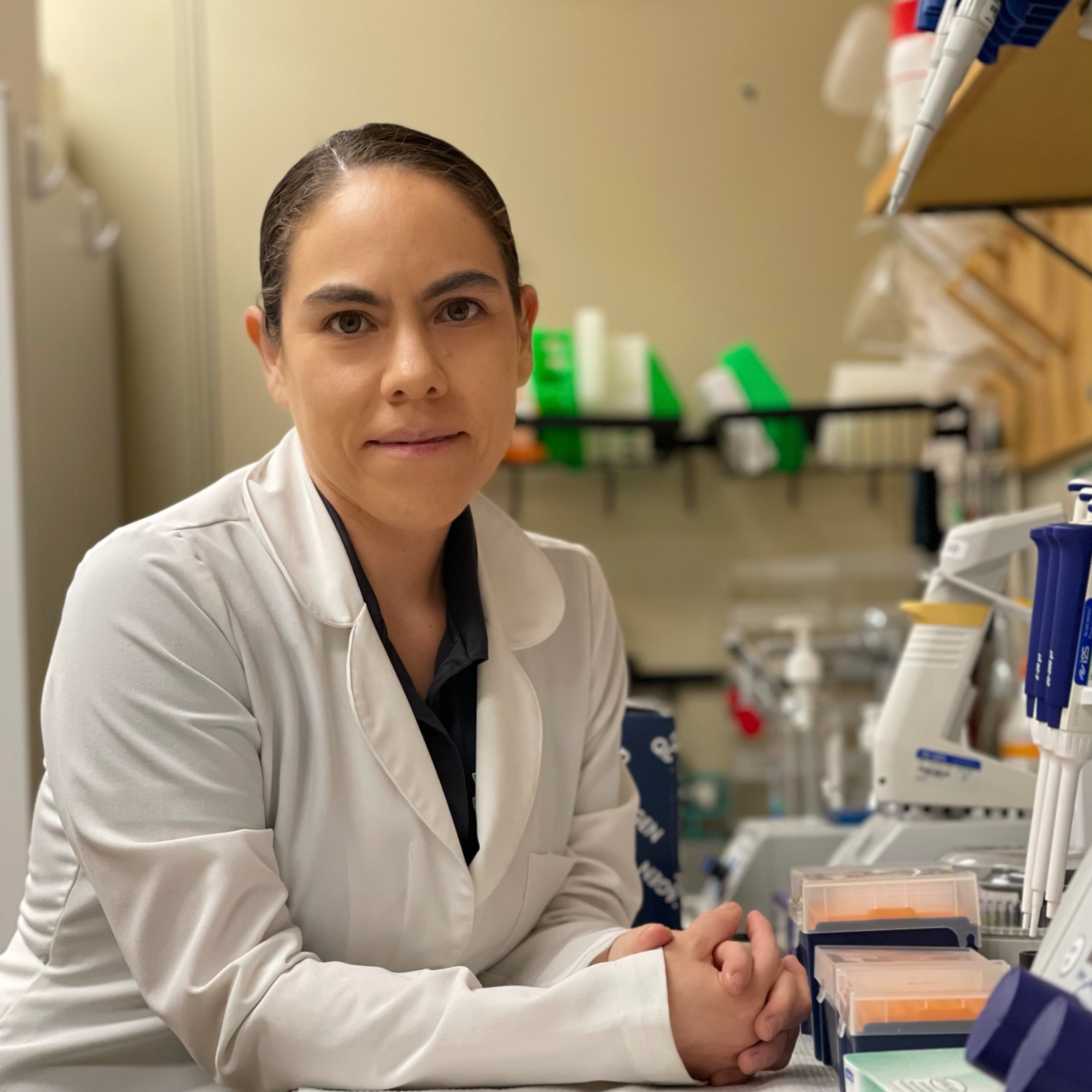Aug 20, 2024
DNA Extraction from Swabbed Feces for Depositor Species Identification - 2024
- 1University of Arizona

Protocol Citation: Karla Vargas 2024. DNA Extraction from Swabbed Feces for Depositor Species Identification - 2024. protocols.io https://dx.doi.org/10.17504/protocols.io.5qpvokdn9l4o/v1
License: This is an open access protocol distributed under the terms of the Creative Commons Attribution License, which permits unrestricted use, distribution, and reproduction in any medium, provided the original author and source are credited
Protocol status: Working
We use this protocol and it's working
Created: August 20, 2024
Last Modified: August 20, 2024
Protocol Integer ID: 106016
Abstract
Protocol developed by the Culver Lab at the University of Arizona to extract DNA from feces for depositor species identification
Preparation
Preparation
Qiagen Kit: Qiagen DNeasy Blood and Tissue extraction Mini kit
Lab Equipment: Heat block, Vortex, Centrifuge, Pipettes, Stainless steel tray, Stainless steel Scissors, Stainless steel tweezers
Solutions and Reagents: 10x PBS (to make 1000 ml of 10X PBS: 5.56 g NaH2PO4, 23.0 g NaHPO4, 87.68 g NaCl, pH to 7.1), proteinase K, ATL buffer, AL buffer, AW1 buffer, AW2 buffer, AE buffer (provided by Qiagen kit), 100% ethanol 100% (not provided)
Consumables: 1.5 ml microcentrifuge tubes, 2 ml microcentrifuge tubes, 2 ml collection tubes, 100-1000 μl pipette tips (filter and sterile), 10-100 μl pipette tips (filter and sterile), QIAamp spin columns (provided by Qiagen kit), sterile cotton-tipped applicators
Other supplies: Parafilm, copy paper, paper towels,10% bleach solution, gloves
Check Qiagen manual "Things to do before starting"
DAY 1
DAY 1
Saturate cotton-tipped applicators with PBS buffer.
● Keep cotton-tipped applicators in PBS buffer for at least 3 minutes.
Pipette 25 μl of proteinase K and 300 μl of ATL buffer (from DNeasy kit) into a new, labeled 2 ml microcentrifuge tube.
Place a sheet of copy paper on a stainless-steel tray to analyze scat samples for swabbing. Swab the surface of the scat with PBS-saturated applicator. Cut the applicator tip and place it in the 2 ml microcentrifuge tube from step 2.
● Bleach and dry the tray and change the copy paper after each sample is processed.
● Change gloves after each scat sample is processed.
● Scissors used to cut the applicator should be submerged in 10% bleach, rinsed, and wiped dry before cutting the next applicator.
Incubate samples at 56°C for 24 – 48 hours.
● To reduce the risk of evaporation due to faulty caps, cover the cap of tubes with parafilm.
DAY 2
DAY 2
Remove parafilm and spin tubes for 15 seconds to remove condensation inside the tube lids.
Remove the applicator and add 366 μl of AL buffer. Vortex and incubate at 56°C for 1 hour.
● Scissors or tweezers used to remove the applicator should be submerged in 10% bleach, rinsed, and wiped dry before removing the next applicator.
Add 366 μl of 100% ethanol and mix by inverting. Continue to step 8 or store at 4°C (stable for weeks).
Label spin columns provided by Qiagen kit and carefully apply 500 μl of lysate from step 7 to the column without moistening the rim.
Centrifuge according to Qiagen DNeasy protocol >= 6000 x g (8000 rpm) for 1 min.
Place the columns in a new 2 ml collection tube, and discard the tube containing the filtrate.
Carefully open the column, apply a second aliquot of 500 μl of lysate and centrifuge according to Qiagen DNeasy protocol >= 6000 x g (8000 rpm) for 1 min.
Place the columns in a new 2 ml collection tube and discard the tube containing the filtrate.
Prepare AE buffer: Bring Buffer AE to 70°C with the heat block. Pipette 100 ul (or 200 for less concentrated DNA) of buffer AE per sample into a new tube and place it in heat block (To use at the end)
Add 500 μl of AW1 wash buffer to column. Centrifuge at >= 6000 x g (8000 rpm) for 1 min. Place the column in a new 2 ml collection tube. Discard the tube containing the filtrate.
Add 500 μl of AW2 wash buffer to column. Centrifuge at 20,000 x g (14,000 rpm) for 3 min. Place the column in a new 2 ml collection tube. Discard the tube containing the filtrate.
Place the columns in a new 2 ml collection tube. Centrifuge at 20,000 x g (14,000 rpm) for 1 min. (Dry spin: this step helps to eliminate the chance of possible buffer AW2 carryover). Discard the tube containing the filtrate.
Remove the column and place it into a labeled 1.5 ml tube. Cut off the caps.
Add 100 - 200 μl of AE elution buffer directly to the column and incubate at room temperature for 1 to 3 minutes.
● Elution with 100 µl (instead of 200 µl) increases the final DNA concentration in the eluate
Centrifuge columns at ≥ 6000 x g (8000 rpm) for 1 minute to elute DNA.
Transfer DNA into labeled 0.5 ml or 1.5 ml tubes.
Discard columns and store DNA at 4°C or -20°C for long term.
Disinfect countertops and equipment with 10% bleach solution.
Optional:
For maximum DNA yield, repeat elution once as described in steps 19-21 . This step leads to increased overall DNA yield. A new microcentrifuge tube can be used for the second elution step to prevent dilution of the first eluate. Alternatively, to combine the eluates, the microcentrifuge tube from step 7 can be reused for the second elution step.
